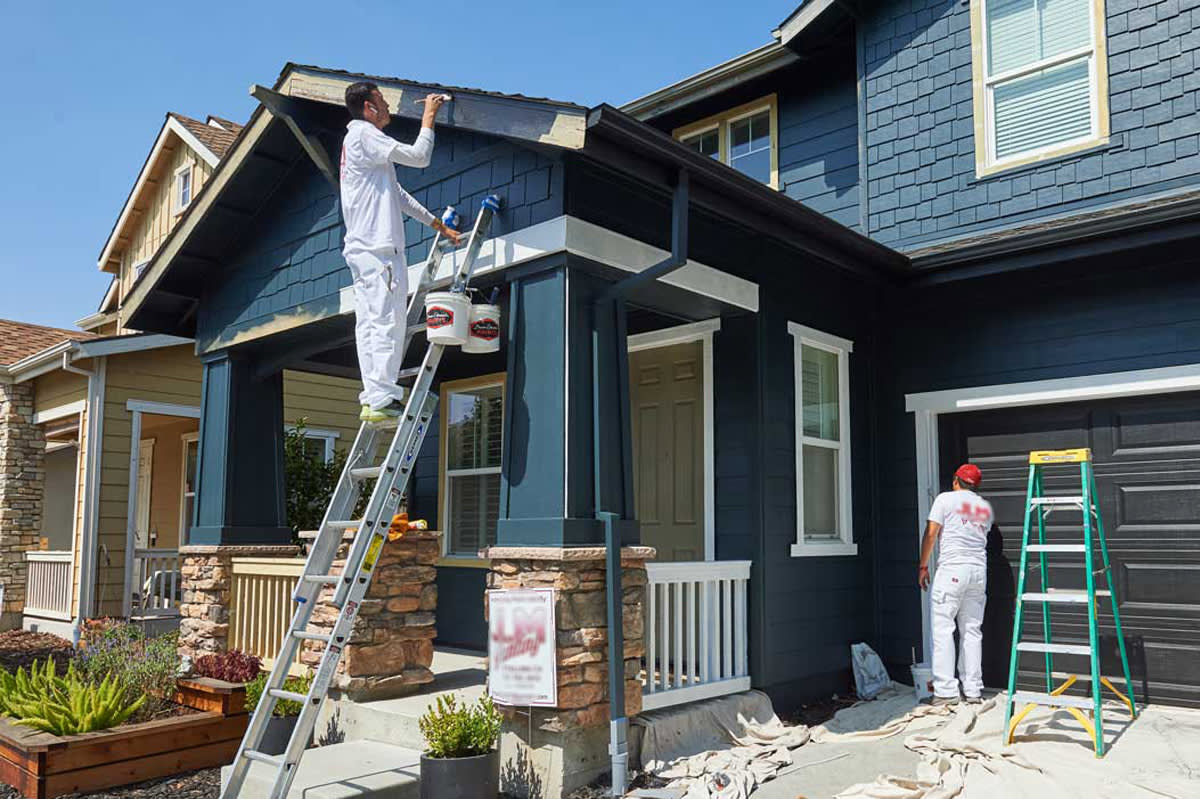Comprehending the Different Types of Paint and Their One-of-a-kind Applications

Water-Based Paints: Benefits and Ideal Uses
Water-based paints are increasingly preferred because of their many advantages and flexibility in numerous applications. These paints are mostly composed of water as a solvent, that makes them an extra eco-friendly choice compared to their oil-based equivalents. They release fewer volatile organic substances (VOCs), minimizing damaging emissions throughout application. Quick drying out times enable faster project completion, making them perfect for both professional and DIY use.
Water-based paints offer excellent attachment and can be conveniently cleansed with soap and water, streamlining the cleaning process. They are suitable for a vast array of surfaces, consisting of wall surfaces, ceilings, and furnishings. Furthermore, these paints provide a smooth surface and are readily available in numerous finishes, from matte to shiny. Their flexibility makes them a favored alternative for interior applications, where reduced smell and quick drying are necessary. On the whole, water-based paints stand apart for their efficiency, adaptability, and safety and security.
Oil-Based Paints: Characteristics and Applications
Oil-based paints are known for their durability and abundant finish, making them a popular selection for different applications, especially in atmospheres that require durability. These paints commonly include a binding representative acquired from oil, which permits for a smooth application and an attractive gloss. Their phenomenal bond buildings make them suitable for surface areas such as wood, stonework, and metal, guaranteeing long-lasting results.
Furthermore, oil-based paints offer superb coverage, commonly calling for fewer coats than their water-based counterparts. They are especially fit for high-traffic areas and surfaces subjected to dampness, such as kitchens and restrooms. However, they do have longer drying out times and send out more powerful odors during application, calling for proper ventilation. Upkeep of oil-based surfaces can be challenging, as they may yellow in time. Their resilience and aesthetic allure make them a popular option among experts and DIY fanatics alike.
Specialty Paints: Discovering One-of-a-kind Choices
Specialized paints use special formulations that satisfy certain needs and applications beyond typical options. These paints include textured, metal, and chalkboard varieties, each made for particular functions. Distinctive paints can create a three-dimensional appearance, perfect for hiding imperfections on walls. Metallic paints give a sparkling surface, often made use of for attractive accents or furnishings, including a touch of elegance to any area. Chalkboard paint changes surfaces into writable locations, making it popular for offices, kitchen areas, and classrooms, where imagination and functionality intersect.
In addition, magnetic paints permit the accessory of magnets, transforming walls right into interactive rooms. Anti-graffiti and anti-fungal paints offer safety duties, preserving surfaces versus criminal damage and mold, respectively. These specialized paints increase the possibilities for specialists and house owners alike, supplying customized remedies that boost both aesthetics and utility in varied environments.
Eco-Friendly Paints: Sustainable Options for Your Projects

Especially, numerous environmentally friendly paints are naturally degradable and packaged in recyclable materials, further boosting their sustainability. Makers typically emphasize accountable sourcing and manufacturing methods, guaranteeing that their products straighten with environmental conservation initiatives.
The toughness of eco-friendly paints has enhanced significantly, making them ideal for various applications, from interior wall surfaces to outdoor surface areas. By picking environmentally friendly paints, customers contribute to a healthier living setting while supporting a more lasting future.
Tips for Selecting the Right Paint for Your Project
When picking the appropriate paint for a job, what aspects should one think about to ensure the very best outcomes? The surface area type is essential; different products such as wood, metal, or drywall require particular paint solutions. Next off, the setting plays a considerable function; click here as an example, outdoor jobs require weather-resistant paints, while indoor areas might profit from low-VOC choices for healthier air quality
Additionally, the desired coating affects the selection; alternatives variety from matte to glossy, each providing distinctive aesthetic appeals and resilience. Color option should additionally straighten with the designated mood or functionality of the area.
Spending plan considerations will guide the choice procedure, as higher-quality paints might come with a greater rate tag but commonly generate far better coverage and long life. By assessing these factors, one can make educated choices that cause successful and gratifying painting outcomes.

Frequently Asked Concerns
Just How Do Paint Ends Up Influence the Final Look?
Repaint surfaces substantially affect the last appearance, with glossy coatings reflecting light and improving colors, while matte coatings offer a softer, more soft effect. Each finish produces distinct aesthetic textures and effects total appearances.
Can I Mix Different Kind Of Paint?
Blending different kinds of paint is typically not a good idea, as it can bring about concerns with attachment, finish, and texture. Compatibility in between paint kinds is important; or else, the results may be disappointing and problematic.
What Is the Rack Life of Unopened Paint?
Unopened paint generally has a shelf life of 2 to 10 years, depending on the type. Proper storage space in an awesome, dry place can assist maintain its top quality and functionality for a longer period.
How Can I Effectively Dispose of Leftover Paint?
To correctly get rid of remaining paint, one ought to inspect neighborhood guidelines, think about donating functional paint, or take it to an unsafe waste center. Proper disposal guarantees environmental safety and compliance with regional waste monitoring guidelines.
Exist Paint Options for Specific Weather Condition Conditions?
Yes, details paint choices exist for different weather, consisting of moisture-resistant paints for moist environments and heat-reflective paints for warm climates. Each type is created to hold up against temperature level variations and ecological difficulties effectively.
In addition, these paints provide a smooth coating and are readily available in numerous coatings, from matte to shiny. Oil-based paints are recognized for their longevity and abundant surface, making them a popular option for various applications, specifically in atmospheres that demand durability. corpus christi tx paint shop. Paint finishes considerably influence the last look, with glossy surfaces mirroring light and enhancing shades, while matte surfaces offer a softer, more soft impact. To effectively dispose of leftover paint, one need to check regional policies, think about giving away usable paint, or take it to an unsafe waste facility. Yes, details paint alternatives exist for various weather condition problems, including moisture-resistant paints for damp atmospheres and heat-reflective paints for bright climates